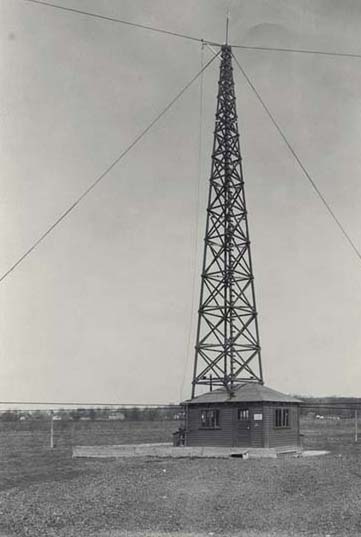|
Yes, for some time now it has been possible to construct a clandestine
television station, which you can operate from your Telecommando Lair, or
modify
for Mobile Media Guerrilla campaigns.
We have named this device the Snow Box, due to its cool nature, and the snow
seen on blank television channels waiting to be commandeered.
To put together a TV station you will need this stuff:
A VCR or Camcorder with video or RF outputs
A Ham Radio 6-meter Band Linear amplifier
(This boosts the RF signal from the VCR for broadcasting)
(The Linear Amp should have a bandwidth of 6 MHz for best results)
A cable television RF distribution amplifier may also be used.
Coaxial cable with UHF connectors
(Connects the Linear Amp to the Antenna)
A cable-TV patch cable with an F-connector and a UHF connector
(To connect the RF signal to the Linear Amp)
(F-connectors are the small ones used with cable TV)
(UHF connectors are the large ones used for Ham Radio)
If your VCR does not have RF outputs:
An external RF modulator (converts video to channel 3,6,12 etc.)
a cable with RCA connectors (a standard stereo cord is ok)
A 6-meter Ham radio antenna.
If you do not have a pre-made 6-meter antenna:
About 20 feet of strong wire
3 ceramic antenna insulators
another UHF connector
Likely places to get the linear amplifier, connectors and cables is a
Ham Radio swapmeet, a Ham club newsletter's classified ads, a Buy-Sell-Trade
paper like The Recycler, or at a store specializing in Ham gear.
RF modulators are available at specialty video stores, or major VCR dealers.
Setting Up the Transmitter:
Using a VCR with RF out:
[VCR/RF]F----------------------------U[Linear Amp]U------------U[Antenna]
weak RF Power RF
Using an External RF Modulator:
[VCR]R-------R[RF Modulator]---------U[Linear Amp]U------------U[Antenna]
video weak RF Power RF
Diagram Symbols:
U UHF-connectors (Ham radio)
F F-connectors (cable TV)
R RCA connectors (stereos)
--- coax, cables, wires
[] devices (name of device in brackets)
<I> ceramic insulator (the kind with a hole at each end)
Building The Dipole Antenna:
wire wire
<I>---------------------+<I>+----------------------<I>
| |
Short coax | |
[U] UHF connector
The antenna is set up much like a clothesline with the wires tethered
straight out horizontally. The outer insulators are used to isolate the
antenna from the tether lines, which should be rope or nylon cords
for good results. The inner insulator isolates a gap between the two
long wires of the antenna.
The length of the wires used for the antenna is critical.
Look up the length in feet for the channel you want to use in the
table below & make each of the two long wires that length.
As a rule of thumb, a wire half-wave antenna's length in feet is equal to
468 divided by the frequency in MHz.
****************************************
VHF Television Channel Data
----------------------------------------
TV MHz ---carrier--- antenna
channel range video sound lengths
------- ----- ----- ----- -------
2 54-60 55.25 59.75 8.47ft
3 60-66 61.25 65.75 7.64ft
4 66-72 67.25 71.75 6.95ft
5 76-82 77.25 81.75 6.05ft
6 82-88 83.25 87.75 5.62ft
7 174-180 175.25 179.75 2.67ft
8 180-186 181.25 185.75 2.58ft
9 186-192 187.25 191.75 2.49ft
10 192-198 193.25 197.75 2.42ft
11 198-204 199.25 193.75 2.34ft
12 204-210 205.25 209.75 2.28ft
13 210-216 211.25 215.75 2.21ft
(All frequencies in MHz)
(Lengths are for half-wave antennas)
****************************************
For Further information: Look in the ARRL Handbook published by the American
Radio Relay League for detailed plans & theory for antennas, transmitters &
linear amplifiers. The info in that book can be used for setting up an
underground AM or FM radio station.
Uses for a TV Clandestine Station:
Public Education: Make a videotape of each step in the process of constructing
your transmitter. Show this tape in your broadcasts, "For informational
purposes
only", of course.
Short-burst zipping: From a fixed or mobile base of operation show short
snippets of graffiti-like computer graphics, quick subliminal messages,
images & suggestions, or brief phreaker manifestos. Commercials are an
opportune time to break into TV broadcasts.
Live call-in shows: Using a Cheese Box, or other device for receiving
untraceable phone calls and a video camera do a live call-in show. Encourage
people to call in using Red, Blue, and other phreaking boxes.
One way to do call ins to your station is to give a phone # of a frend
and use AT&T call forwarding to forward to your phone, then use a radio
shack phone recorder to send the signal to the input of a tape deck and
then run the output of the tape deck to the input of your mixer.
Annother way is to give the number of a local phone booth and use CB
or other means of transmission to get it back to your booth. Both of
these methods can give away your city of origin if someone looks up the
are code.
To avoid this you can find a bussiness that has an answering machine
on an 800 number and play with your phone, trying different numbers until you
crack their playback code, (this is usually two numbers) then
have your audience call and leave your messages or a number for you to call
them back. Then you call the machine, enter the code number, and get your
messages.
Click here to download file

|

